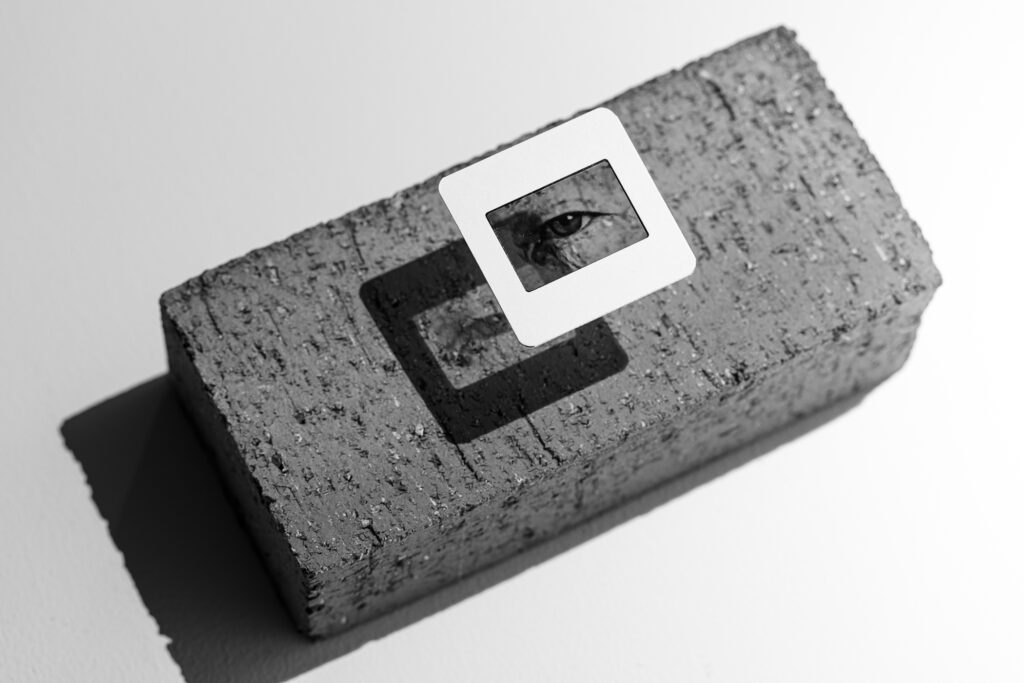How do you make a photograph without a camera? Believe it or not, cameraless photography is older than photography with a camera.
Artist Kei Ito uses cameraless photography to create what he calls “irradiated histories,” or works of art that address nuclear disaster and the possibilities of healing and reconciliation. His work will be on view in “Kei Ito: Staring at the Face of the Sun,” a new exhibition at the Georgia Museum of Art through July 14.
Organized by Jeffrey Richmond-Moll, now the George Putnam Curator of American Art, Peabody Essex Museum, and previously the Georgia Museum of Art’s curator of American art, the exhibition shows Ito’s different approaches to communicating the trauma of the nuclear age.
For example, “Sungazing Scroll” is a 118-foot-long photogram for which Ito exposed segments of photographic paper to sunlight 108 times, with each exposure lasting the length of a single breath. The number 108 holds profound cultural meaning in Japanese Buddhism. To mark the Japanese New Year, bells toll 108 times, symbolizing the cleansing of inner turmoil and the purifying of the human soul. The idea of sunlight as a terrifying force comes from Ito’s grandfather’s experience as a survivor of the atomic bomb the United States detonated over the Japanese city of Hiroshima. Ito’s grandfather said that the light from the explosion was as though hundreds of suns were lighting up the sky. The work also makes the viewer think about how nuclear radiation and breath are similarly invisible but powerful.
Ito sees the global nuclear era as having produced shared trauma worldwide, not just in those who experienced the bombing of Hiroshima. His work “Eye Who Witnessed,” on view in the exhibition, consists of 108 photograms that show close-up views of eyes. Half of the eyes belong to Japanese nuclear survivors, and half belong to American downwinders, the forgotten casualties of nuclear testing. Some of the earliest victims of U.S. nuclear weapons were the Americans who performed government tests or who lived downwind of those test sites. Placing them side by side, Ito focuses on their shared experience of suffering and resilience.
“Kei Ito’s photographs encourage viewers to recognize their own place within our collective nuclear legacy. In a world facing continued threats of nuclear violence, his works are a spark and a balm: they engage with intergenerational trauma through a technically innovative visual language, yet also offer an emotionally stirring commentary on the possibilities for reconciliation,” Richmond-Moll said.
Ito’s photography encourages visitors to recognize their own place within a collective nuclear legacy. His cameraless techniques make visible the invisible forces of radiation, memory and mortality.
Funding for “Kei Ito: Staring at the Face of the Sun” is made possible by the Henri and Tomoye Takahashi Charitable Foundation, with additional support from the Friends of the Georgia Museum of Art and Sara and John Shlesinger.
Related events include:
- An Atomic Age film series featuring “Hiroshima Mon Amour,” with an introduction by Richard Neupert, Charles H. Wheatley Professor of the Arts in the Franklin College of Arts and Sciences’ theatre and film studies department (Feb. 1 at 7 p.m.), “Children of Hiroshima” (Feb. 15 at 7 p.m.) and the original “Godzilla,” with an introduction by Chris Sieving, associate professor in the theatre and film studies department (Feb. 29 at 7 p.m.)
- A conversation with Kei Ito and artist Binh Danh, moderated by museum director David Odo, on Feb. 8 at 5:30 p.m.
- 90 Carlton: Winter, a quarterly reception celebrating exhibitions at the museum hosted by the Friends of the Georgia Museum of Art, on Feb. 9 from 6:30-8:30 p.m. with light refreshments, door prizes and more; $15 Not Yet Friends; $10 Friends of the Museum and Friend + Annual Fund Members; free for Friend + Annual Fund Members (Reciprocal level and above); register at https://bit.ly/90c-feb-24.
- A creative aging art workshop with instructor Toni Carlucci on Feb. 20 at 10 a.m. (geared to ages 55+)
- A Teen Studio on Feb. 29 from 5:30-8 p.m.
- Student Night, geared to UGA students, on Feb. 29 from 6-8 p.m.
- An art and wellness program led by art therapist Meg Abbot on March 10 from 2-4 p.m.
- A program with Naomi Egel, assistant professor, department of international affairs in the School of Public and International Affairs, on March 20 at 2 p.m.
- And a Family Day on May 18 from 10 a.m. to noon.
Family Day is sponsored by Lucy and Buddy Allen and the Friends of the Georgia Museum of Art. Student Night and films are generously sponsored by the UGA Parents Leadership Council. All programs are free and open to the public unless otherwise indicated. The creative aging art workshop, Teen Studio and the art and wellness program are free but have limited space; register by emailing gmoa-tours@uga.edu.
